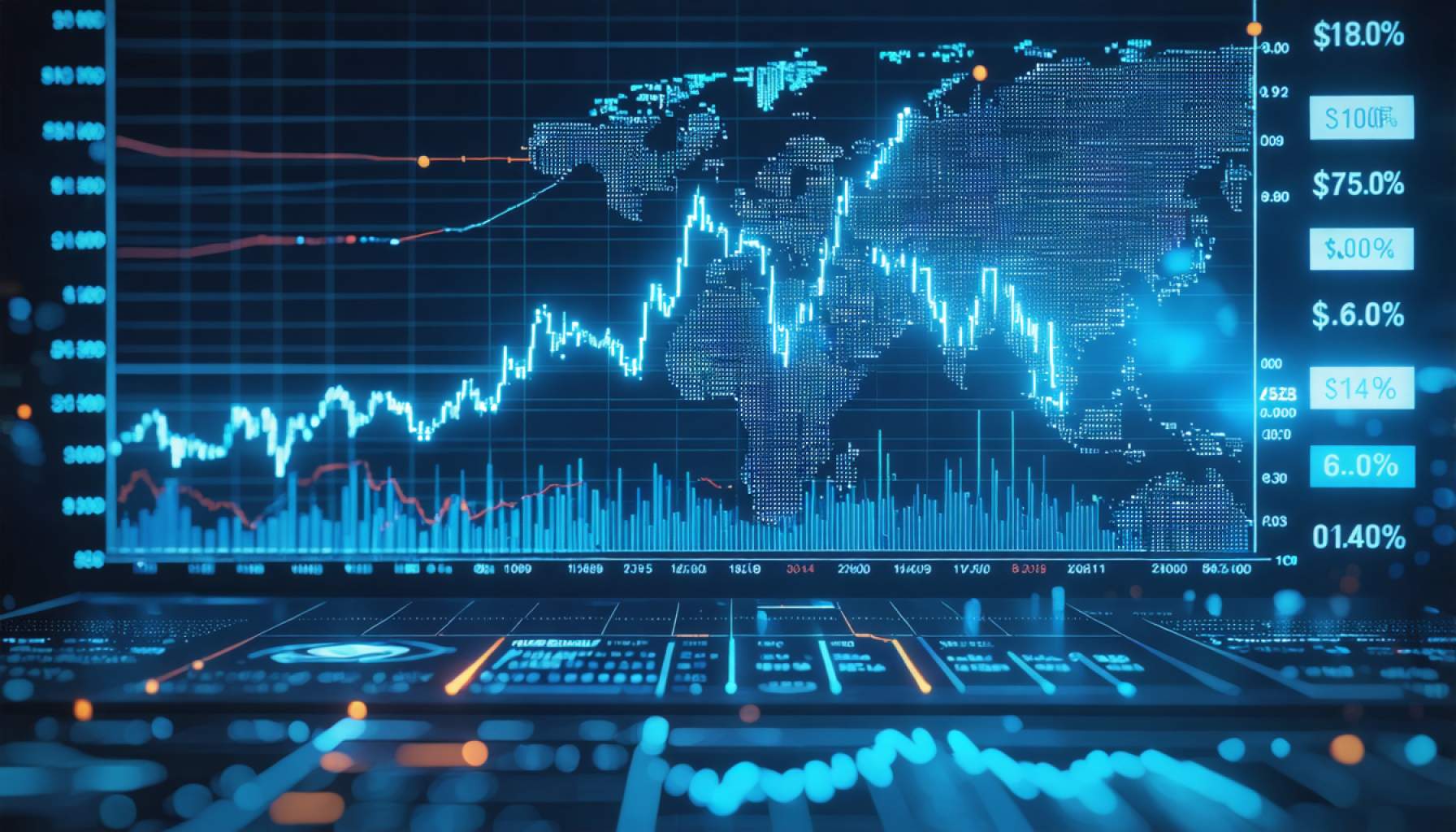
- The Dow plunged 2,200 points due to new US trade tariffs, sparking fears of a trade war and economic slowdown.
- US tariffs, particularly on Chinese imports, led to expected but impactful retaliatory measures from China.
- Investor anxiety is high, with retirees worried about their investments, while young investors see opportunities in low market prices.
- Companies with strong ties to Asia, like Apple and Amazon, face increased costs and potential supply chain disruptions.
- The US administration views these economic challenges as a temporary sacrifice for anticipated long-term benefits, but the timeline remains uncertain.
- Experts advise resilience and strategic planning, highlighting that change is a constant in global trade.
A familiar storm brews on Wall Street as fresh trade policies send ripples of anxiety through global markets. The recent plunge, a dizzying drop of 2,200 points in the Dow, reignites memories of the dramatic downturns seen during past economic crises. The epicenter of this financial quake lies with new tariffs announced by the US administration, triggering fierce responses from global trade partners and sowing seeds of doubt among investors.
Imagine a bustling market square, suddenly eerily quiet as traders and investors pause, their attention gripped by rolling global headlines that hint at a looming trade war. The atmosphere is thick with uncertainty, a palpable tension akin to the moments before a thunderous summer storm.
With the US imposing tariffs, particularly on Chinese imports, the retaliatory measures from China were expected but no less impactful. This tit-for-tat dynamic has exacerbated fears of an economic slowdown, casting a long shadow over the robust growth forecasts many had optimistically championed.
The real worry manifests within households across America. For those on the brink of retirement, there is a pressing concern. Their nest eggs, tied to a once-buoyant stock market, now seem vulnerable to the whims of international trade disputes. Financial advisors become beacons of hope, guiding wary investors through the turbulence.
For younger investors, the advice runs counter-intuitive. The market dip may appear daunting, yet it represents a rare opportunity. Low prices can offer fertile ground for long-term financial growth, a lesson often learned amid market turbulence.
Companies deeply entwined with Asian markets, such as tech giants Apple and Amazon, brace for significant impacts. These businesses, bridging the gap between production across the seas and American consumers, now face the challenging task of navigating increased costs and potential supply chain disruptions.
Meanwhile, amidst the chaos, the administration remains firm in its stance. The assertion is one of temporary pain, a necessary sacrifice for what is promised to be long-term gain. Yet, the timeframe for this ‘short-term’ discomfort remains hazy, leaving businesses and consumers alike to speculate.
As this saga unfolds, investors watch closely, gauging their moves like chess players eyeing their next strategy. The key takeaway emphasizes resilience and strategic planning, reminding all stakeholders that in the world of economics and global trade, change is the only constant. Keep a steady course, weigh your options wisely, and seek guidance if the path ahead seems unclear.
Trade Wars and Market Volatility: What You Need to Know
The recent plunge in the Dow, dropping by 2,200 points due to the unveiling of new US tariffs, has once again stirred memories of financial crises past. As the US imposes tariffs primarily on Chinese imports, the expected retaliatory measures from China have intensified concerns of an impending economic slowdown.
Understanding the Tariff Impact
The implementation of tariffs can have cascading effects across various sectors. Consumers might experience price increases on everyday goods, while companies could face heightened operational costs. In global trade, tariffs can escalate into a trade war, leading to broader economic repercussions. As one of the world’s largest economies, the US’s trade policies significantly influence global markets.
For Industry and Investors
– Real-World Use Cases: Companies like Apple and Amazon, heavily reliant on Asian manufacturing, might face increased production costs and supply chain disruptions. These challenges can curtail profit margins and necessitate shifts in sourcing strategies.
– Market Forecasts & Industry Trends: Economists predict a period of market volatility as investors adjust to new trade policy realities. Long-term growth projections depend on the resolution of trade tensions and adaptive strategies by affected companies.
Advice for Different Market Participants
– Retirees and Near-Retirees: Volatility is a significant concern for those with portfolios leaning heavily on stocks. Diversifying investments and consulting with financial advisors could provide a buffer against market swings.
– Young Investors: Market dips offer potential investment opportunities. Buying stocks at lower prices during periods of decline can boost long-term returns. This counter-intuitive strategy, known as buying the dip, can be beneficial with a focus on solid, well-performing companies.
Pros & Cons of Trade Policies
– Pros:
– Potential to revive domestic industries by protecting them from cheaper foreign competition.
– Encourages investment in American manufacturing.
– Could lead to better trade deals in the long run.
– Cons:
– Short-term economic uncertainty affecting stocks and consumer prices.
– Retaliation from affected trade partners could hurt American companies relying on exports.
– Disruptions in global supply chains lead to operational difficulties for multinational corporations.
Security & Sustainability
Trade policies could incentivize searching for more sustainable, locally sourced materials and practices, as reliance on foreign imports becomes costlier. This shift could promote long-term environmental benefits.
Strategic Recommendations
1. Diversify Portfolios: To mitigate risks, spread investments across various sectors and asset types.
2. Stay Informed: Keep abreast of policy changes and market trends.
3. Seek Professional Guidance: Engaging financial advisors can help navigate short-term market volatility while planning for long-term gains.
4. Adaptability: Companies should reevaluate supply chains and consider diversifying sources to mitigate tariff impacts.
In this constantly shifting economic landscape, the key is to maintain resilience and strategic foresight. Staying informed, adaptable, and diversified will equip both individuals and businesses to weather the complexities of global trade dynamics. For more insights on navigating economic changes, visit the Wall Street Journal for comprehensive financial news and analysis.



